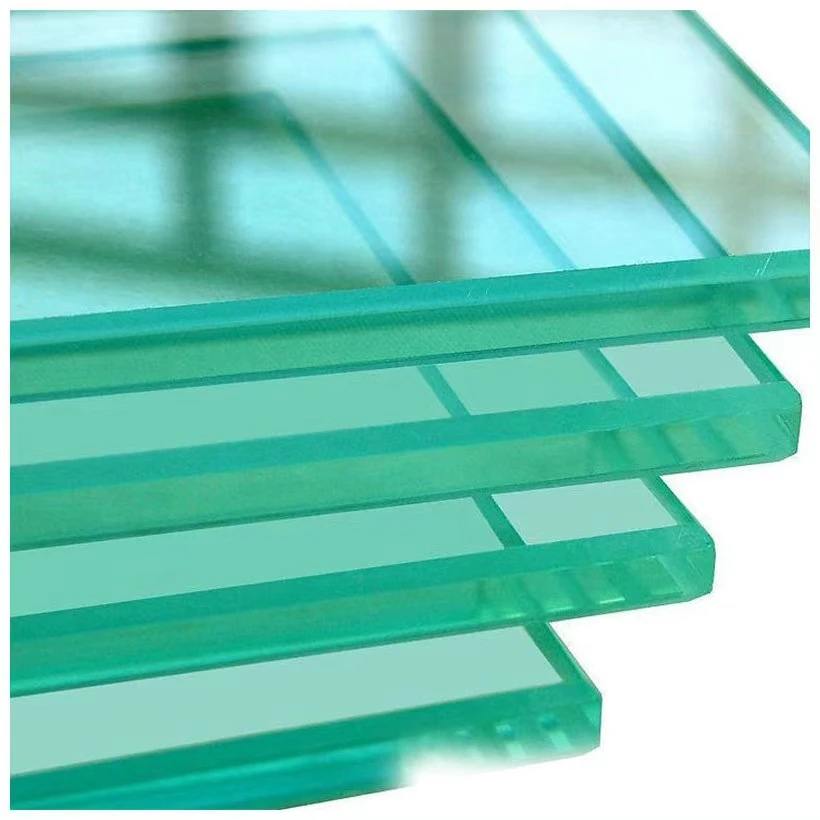The Evolution and Benefits of Transparent Float Glass
Transparent float glass, often referred to as float glass, is a remarkable material that has revolutionized the construction, automotive, and decorative industries. Its unique manufacturing process and inherent properties make it a popular choice for various applications, providing clarity, strength, and versatility.
Manufacturing Process
The process of creating transparent float glass was developed in the 1950s and has since become a standard in the glass-making industry. The float glass process involves melting raw materials—primarily silica sand, soda ash, and limestone—at high temperatures. The molten glass is then poured onto a bed of molten tin. This method allows the glass to spread evenly and form a smooth, flat surface as it cools. The result is a piece of glass that is uniformly thick and possesses optical clarity, which is essential for many applications.
The float glass process is not only efficient but also environmentally friendly. The materials used are abundant and recyclable. Manufacturing float glass generates less waste compared to other glass-making methods, thereby minimizing its environmental impact. Additionally, the production process can be adjusted to create specialized glass types, such as low-emissivity (low-E) glass, which has superior thermal performance.
Optical Clarity and Strength
One of the defining features of transparent float glass is its exceptional optical clarity. The glass is nearly free of distortions, allowing for unimpeded light transmission, which is crucial for various applications. This quality makes float glass an ideal choice for windows, façades, and glass doors in buildings, as well as for mirrors and display cases in retail settings.
In addition to its clarity, float glass boasts considerable strength. While it is not inherently shatterproof, it can be treated or laminated to enhance its durability. Tempered glass, for instance, undergoes a process of rapid heating and cooling that makes it much tougher than standard glass. This characteristic is especially important in safety applications where glass is subjected to impact or stress.
Applications Across Industries
transparent float glass
The versatility of transparent float glass has led to its widespread use across multiple industries. In architecture and construction, it is a preferred choice for buildings where natural light and aesthetic appeal are paramount. Floor-to-ceiling windows, glass partitions, and skylights are popular applications that benefit from float glass’s clarity and strength.
In the automotive industry, float glass is used for windshields and windows, providing essential visibility and safety features. Advances in automotive float glass technology have led to the development of tinted and reflective glass options, enhancing privacy and reducing glare for drivers.
The decorative arts also utilize transparent float glass extensively. From artistic installations to functional items like tabletops and shelving, its smooth surface and ability to be shaped, etched, or colored make it a favored material among designers and artists.
Energy Efficiency and Sustainability
With the increasing focus on sustainability, transparent float glass has gained popularity not just for its aesthetic qualities but also for its energy efficiency. Low-E coatings, which can be applied during production, help to reflect heat while allowing visible light to pass through. This improves the energy efficiency of buildings by reducing heating and cooling costs, ultimately contributing to a lower carbon footprint.
Moreover, the recyclability of float glass adds to its appeal. It can be melted down and remade into new glass products without losing quality, promoting a circular economy and reducing waste.
Conclusion
Transparent float glass is more than just a building material; it is a versatile and environmentally friendly solution that enhances our everyday lives. From its innovative manufacturing process to its myriad applications in construction, automotive, and decorative realms, this glass type continues to evolve and meet the demands of modern society. As we move towards a more sustainable future, the significance of transparent float glass is set to grow, underlining its place as a cornerstone of contemporary design and technology.
 Afrikaans
Afrikaans  Albanian
Albanian  Amharic
Amharic  Arabic
Arabic  Armenian
Armenian  Azerbaijani
Azerbaijani  Basque
Basque  Belarusian
Belarusian  Bengali
Bengali  Bosnian
Bosnian  Bulgarian
Bulgarian  Catalan
Catalan  Cebuano
Cebuano  Corsican
Corsican  Croatian
Croatian  Czech
Czech  Danish
Danish  Dutch
Dutch  English
English  Esperanto
Esperanto  Estonian
Estonian  Finnish
Finnish  French
French  Frisian
Frisian  Galician
Galician  Georgian
Georgian  German
German  Greek
Greek  Gujarati
Gujarati  Haitian Creole
Haitian Creole  hausa
hausa  hawaiian
hawaiian  Hebrew
Hebrew  Hindi
Hindi  Miao
Miao  Hungarian
Hungarian  Icelandic
Icelandic  igbo
igbo  Indonesian
Indonesian  irish
irish  Italian
Italian  Japanese
Japanese  Javanese
Javanese  Kannada
Kannada  kazakh
kazakh  Khmer
Khmer  Rwandese
Rwandese  Korean
Korean  Kurdish
Kurdish  Kyrgyz
Kyrgyz  Lao
Lao  Latin
Latin  Latvian
Latvian  Lithuanian
Lithuanian  Luxembourgish
Luxembourgish  Macedonian
Macedonian  Malgashi
Malgashi  Malay
Malay  Malayalam
Malayalam  Maltese
Maltese  Maori
Maori  Marathi
Marathi  Mongolian
Mongolian  Myanmar
Myanmar  Nepali
Nepali  Norwegian
Norwegian  Norwegian
Norwegian  Occitan
Occitan  Pashto
Pashto  Persian
Persian  Polish
Polish  Portuguese
Portuguese  Punjabi
Punjabi  Romanian
Romanian  Russian
Russian  Samoan
Samoan  Scottish Gaelic
Scottish Gaelic  Serbian
Serbian  Sesotho
Sesotho  Shona
Shona  Sindhi
Sindhi  Sinhala
Sinhala  Slovak
Slovak  Slovenian
Slovenian  Somali
Somali  Spanish
Spanish  Sundanese
Sundanese  Swahili
Swahili  Swedish
Swedish  Tagalog
Tagalog  Tajik
Tajik  Tamil
Tamil  Tatar
Tatar  Telugu
Telugu  Thai
Thai  Turkish
Turkish  Turkmen
Turkmen  Ukrainian
Ukrainian  Urdu
Urdu  Uighur
Uighur  Uzbek
Uzbek  Vietnamese
Vietnamese  Welsh
Welsh  Bantu
Bantu  Yiddish
Yiddish  Yoruba
Yoruba  Zulu
Zulu 

